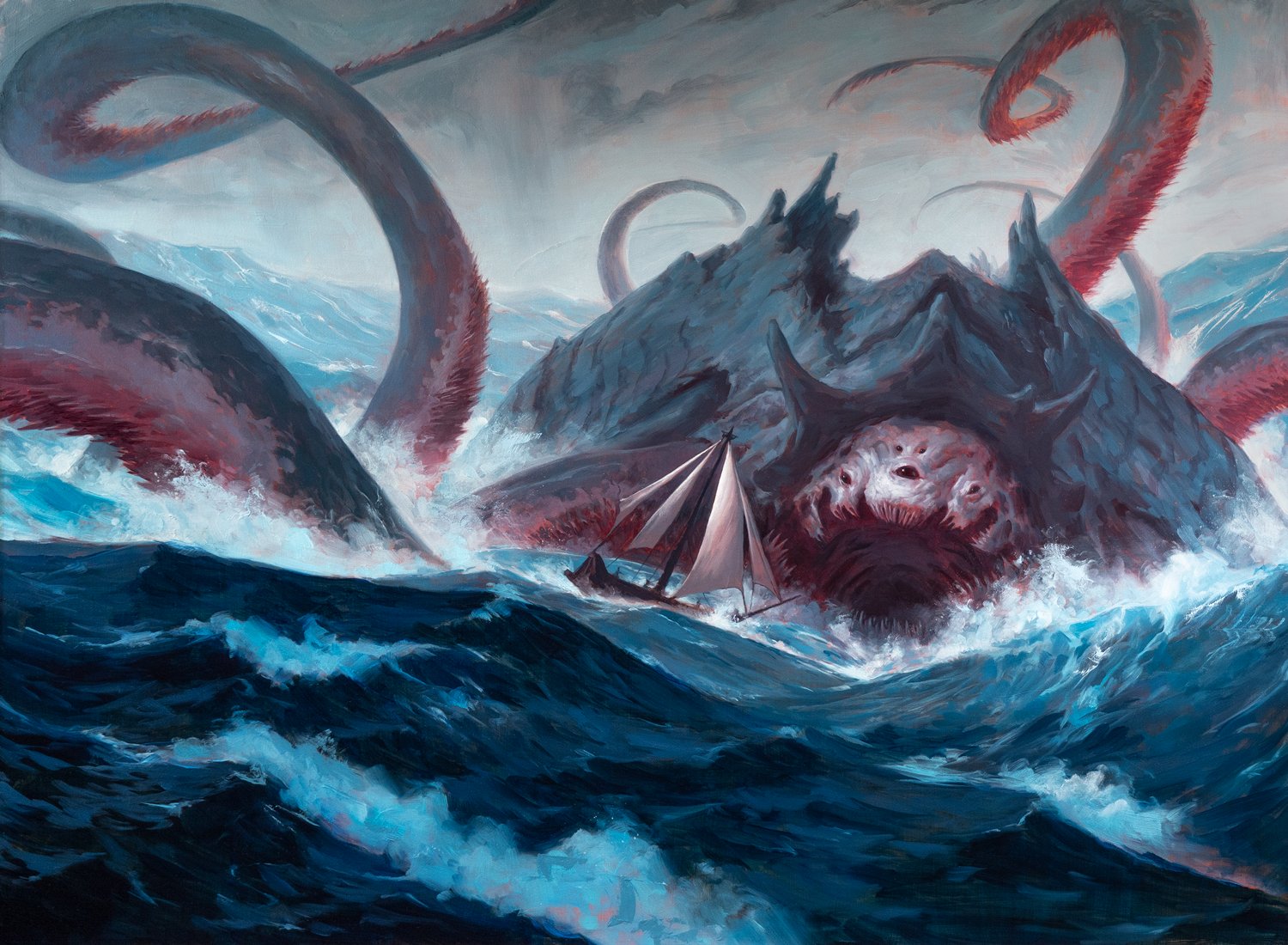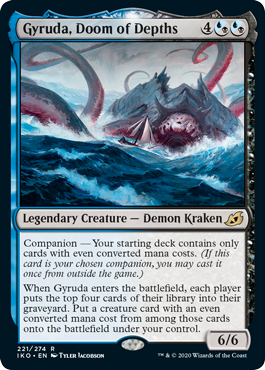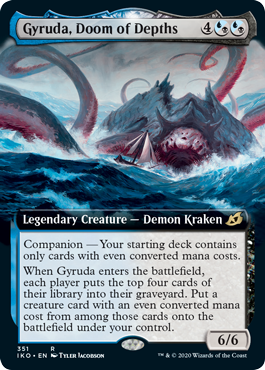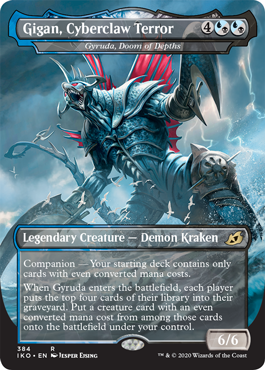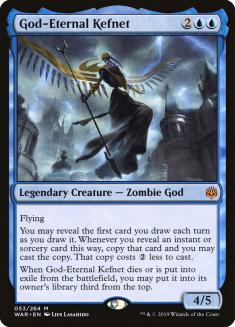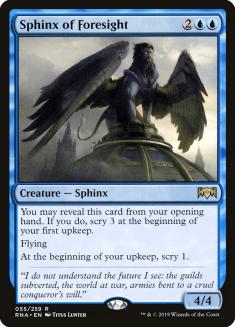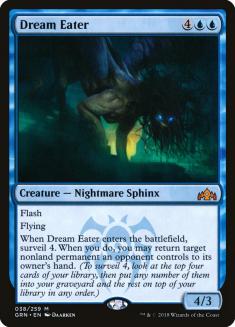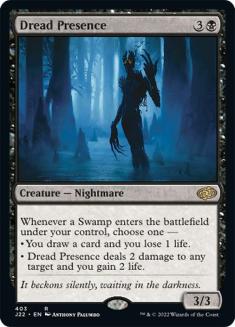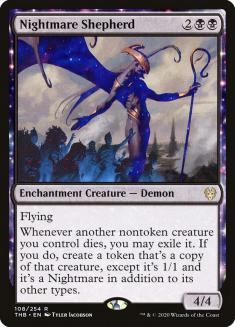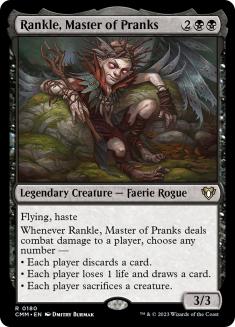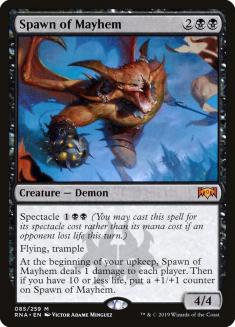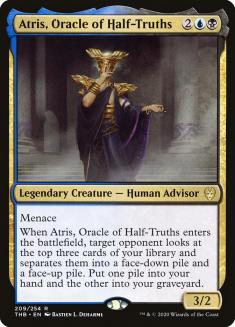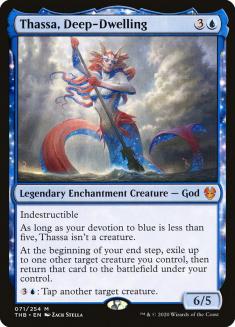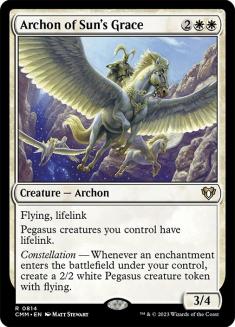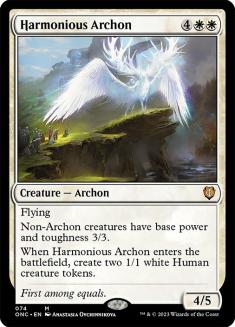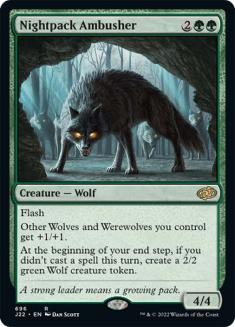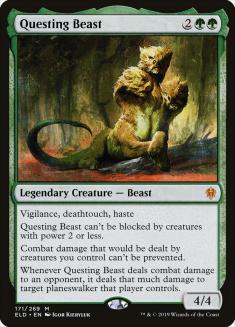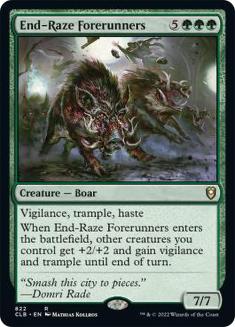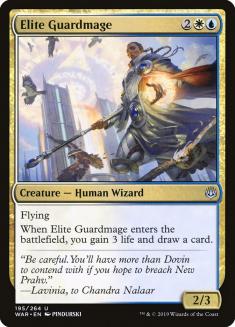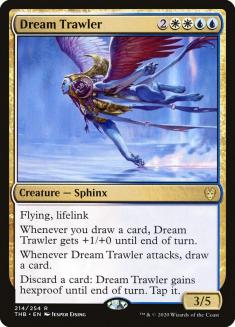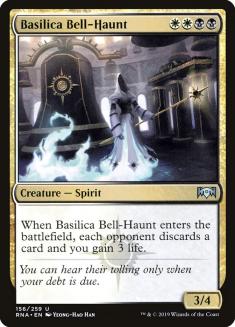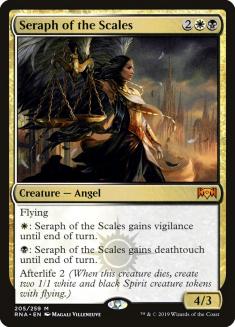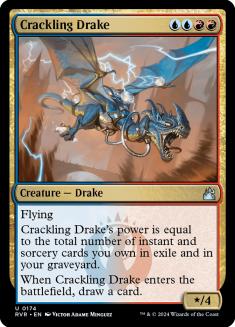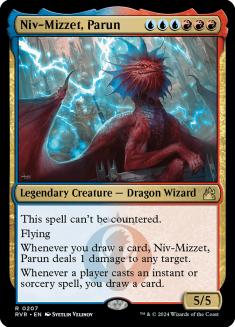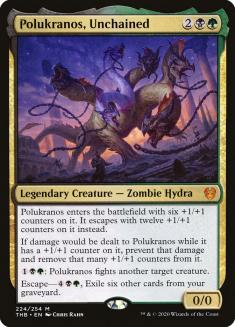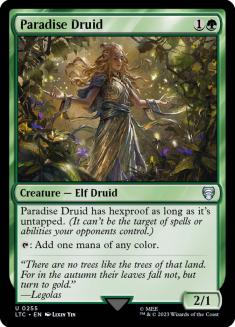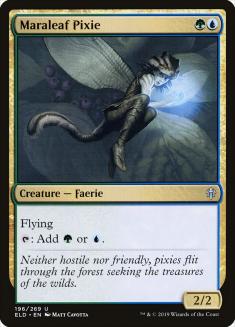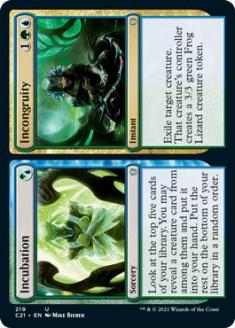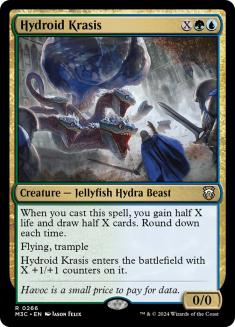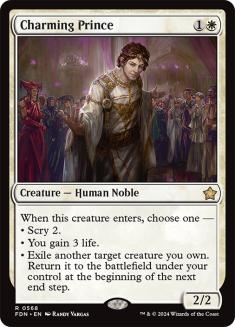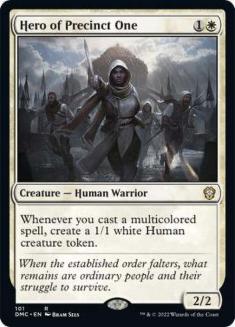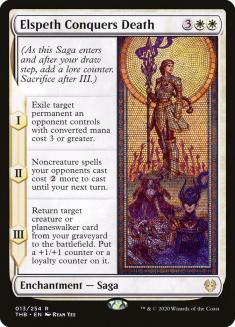Ahem…
How many cards you start with in your opening hand can matter a lot in games of Magic. Whenever your opponent mulligans to six you can’t help but feel like you have quite the leg up on them. Indeed, if the game stalls out, then being up that extra card on your opponent is going to make a meaningful difference. Similarly, starting with eight cards to your opponent’s seven is going to be a big advantage to you on the same basis, and this starts to hint at quite how powerful companion is as a mechanic, and exactly why you want to strive to get this mechanic to work for you. Your companion is that eighth card you’ll start the game with.
Now consider that that eighth card you’ll start with is one you can design to work well with your deck, even build your deck around, and, yes, you start with access to it every single game. This combination of built-in card advantage alongside synergistic support is very, very exciting.
All of the companion cards I’ve seen so far present fun deckbuilding restrictions and a lot of power for those who can jump through the necessary hoops. My favourite one so far is Gyruda, Doom of Depths, who essentially asks that you cut the Standard card pool in half if you want to play Gyruda by your side; only cards with even converted mana costs may apply.
Not only is the deckbuilding restriction we see here compelling, but so is the mana cost; Gyruda may be a tiny bit better in a Dimir deck due to how easy it will be to cast, but really, as long as your deck is capable of producing either black or blue mana, the card should still be eminently castable and you have to be careful not to get caught in the trap of seeing it as purely a Dimir card, as the majority of two-colour combinations will have access to Gyruda if they want to play it.
We could start by breaking this down into what good cards there are in Standard with even converted mana costs, but that’s a wide and daunting task; narrowing the Standard card pool down to, well, half the Standard card pool doesn’t really give us a direction to work in. Instead, let’s look at Gyruda’s enters-the-battlefield ability.
When Gyruda enters the battlefield, each player puts the top four cards of their library into their graveyard. Put a creature card with an even converted mana cost from among those cards onto the battlefield under your control.
When this ability fails us, Gyruda is going to be close to a vanilla 6/6, which is quite bad, but when the ability returns an expensive creature to the battlefield, that’s going to be a colossal swing, feeling almost like a Torrential Gearhulk that brings back creatures instead of instants. To maximize Gyruda as a companion, we need this ability to work the vast majority of the time, and need the swing it causes to be as large as possible.
Looking at the maths, in a typical Standard deck you’re going to need twenty creatures to have over an 80% chance to return one from the four cards Gyruda will mill from your deck when it enters the battlefield. This ignores that you might hit a creature from your opponent’s deck instead, which is unreliable as you don’t know what the opposing deck looks like but will meaningfully push the odds in your favour on average, but just generally I’d like to meet this twenty-creature minimum without this sort of outside assistance.
With all that in mind, here are some of the most exciting even converted mana cost creatures in Standard that we could aim to return and that might pull us into various colour combinations:
This is a lot to take in at once still, and some of these cards present deckbuilding restrictions themselves that clash with the creature-dense nature of a Gyruda deck; a card like Crackling Drake never wants to be close to a deck with twenty creatures due to how many instants and sorceries it needs surrounding it. That said, we also get some idea of directions we could take here, with a lot of solid creatures in an Esper-ish space available to us, as well as huge haymakers from the green cards we have access to.
Let’s start with something simple here and build on an existing archetype that seems to have some meaningful overlap, Azorius Flicker:
Creatures (31)
- 3 Dream Eater
- 2 Hydroid Krasis
- 4 Paradise Druid
- 4 Fblthp, the Lost
- 4 Elite Guardmage
- 4 Maraleaf Pixie
- 4 Charming Prince
- 4 Thassa, Deep-Dwelling
- 2 Gyruda, Doom of Depths
Lands (25)
Spells (4)

Well, I guess I lied when I said we’d be updating Azorius Flicker, as this deck is decidedly Bant instead for two reasons. One is that when you get rid of all the odd converted mana cost cards from your card pool, you’re suddenly stretched thin on appealing cards in some of the two-colour combinations, making going into a third colour necessary to find cards your’re excited to include. The second reason is that two-mana ramp spells, like these Paradise Druids and Maraleaf Pixies I included, play incredibly well with Gyruda’s deckbuilding restriction as they let you naturally skip over three-mana spells by letting you cast a four-mana spell on your third turn instead.
I didn’t set out to make the maindeck consist of 31 creatures and four copies of Incubation // Incongruity, but I sure did end up there. Whilst you can’t meaningfully return Hydroid Krasis with Gyruda, it is still just a great card to play and makes our Incubations more potent in the late-game, and the remaining 29 non-Jellyfish creatures make your Gyruda trigger an impressive 94% to grab a creature from your deck for you. Milling Gyruda to itself may seem unexciting, but actually when this happens you just get a re-buy on your Gyruda trigger; return that second Gyruda, remove one of them to the legend rule, and then see if the next four cards have anything better to bring onto the battlefield.
Note how well Gyruda plays with a lot of the synergies that already existed in Azorius Flicker. If you return a Charming Prince you’ll get to Flicker your Gyruda to trigger it again on your end step and find another creature in the process. Similarly returning a Thassa, Deep-Dwelling will mean your Gyruda triggers again on your end step, churning through your deck for more and more creatures; it’s possible that we mill so many cards like this in practice that we should look towards including Thassa’s Oracle too.
In addition to how well Gyruda pairs with these Flicker effects, Thassa is just such an incredible card in this deck that having an additional way to dig for it is very impactful, as is knowing that if you cast a Thassa on curve you’re only a couple turns away from getting your companion onto the battlefield to pair with her. In fact, between Incubation and Gyruda, you’re just incredibly unlikely to be without your Thassa if you really want her on the battlefield (and you really do).
If we’re assuming that three-colour combinations are best-suited to having Gyruda as your companion, and we recognise that a lot of the cards I highlighter earlier were Esper, then, well…
Creatures (18)
- 3 Seraph of the Scales
- 4 Hero of Precinct One
- 1 God-Eternal Kefnet
- 3 Elite Guardmage
- 3 Atris, Oracle of Half-Truths
- 4 Dream Trawler
Lands (26)
Spells (16)

There are a few different ways to build a Gyruda deck. The Bant Flicker deck I showed earlier attempted to make Gyruda not only your companion, but a synergistic card in the deck that’s so great that you’re actively happy to drop additional copies beyond your the first one you cast. This Esper Hero deck goes in the opposite direction; here Gyruda doesn’t have any exciting synergies beyond there just being some nice creatures to return, and with only eighteen creatures in the deck we’re only 77% to find one of our own creatures with our Gyruda trigger (though we are 25% to find one of our Dream Trawler).
Here we’re not pushing Gyruda to its limit, but instead are looking towards this Demon Kraken as a source of card advantage thanks to its companion ability. It’s not clear we’d be that excited to draw a copy of the card naturally (though I may just be underrating it a bit when I say that), but when you just get given a copy of the card without having to draw it or even include it in your deck it suddenly becomes much more appealing. It even triggers your Hero of Precinct One!
Here’s a fun little secret about companion creatures, however. We’re going to be jumping through hoops to make them our companions because that mechanic seems very powerful, and those hoops are fun to try to clear. But…you can just put these cards in your deck too, y’know? No one is going to get mad at you just because you decided Gyruda, Doom of Depths was more of a role-player in your maindeck than a fearsome companion who will fight by your side. You don’t have to play only even converted mana cost cards.
Creatures (23)
- 4 Fblthp, the Lost
- 4 Elite Guardmage
- 2 Agent of Treachery
- 4 Charming Prince
- 4 Thassa, Deep-Dwelling
- 2 Thassa's Oracle
- 3 Gyruda, Doom of Depths
Planeswalkers (4)
Lands (26)
Spells (7)
Sideboard

Going back to our Flicker deck from earlier, what about if we just decided to play odd cards anyway? Gyruda synergises well with what the deck is doing as we explored earlier, digging for Thassa and then being Flickered repeatedly to find more bodies. This build also has an 83% chance of finding a hit from your deck when you resolve Gyruda, which is very respectable, especially considering all the upsides the card comes with in this build, though you may have to trim on the card if you sideboard in a large number of noncreature spells.
Sure, we don’t get Gyruda as our companion, but in exchange we do get access to some of the best cards in Standard like Teferi, Time Raveler and Elspeth Conquers Death. Best of all, Gyruda’s trigger even helps fill our graveyard for our Elspeth Conquers Deaths – the even tribal legendary creature and the odd converted mana cost enchantment, working together in harmony!
Gyruda is a pretty strange case in that even when it’s not a companion it still comes with an awful lot of baggage, though fortunately that doesn’t hurt us too much here as every creature except for Agent of Treachery costs an even amount of mana anyway. The big takeaway here with these companion cards is not to tunnel-vision on them; they’ll certainly be at their most compelling when you do get to take advantage of this unique and potent mechanic, but they may still be good enough if you just play them normally instead.
As far as Gyruda, Doom of Depths is concerned, this may just be the tip of the iceberg with how you can approach the card. Ikoria: Lair of Behemoths is looking to be a very creature-centric set, and every new powerful creature with an even converted mana cost that is previewed has the potential to push this companion one step further towards finding the perfect home in Ikoria: Lair of Behemoths Standard.

